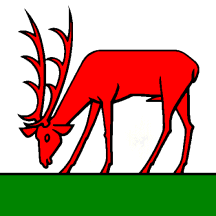
Flag of Hottwil, Switzerland
![]()
A Ferrule According to Spanish Regulations (Reglamento de Banderas Actualizado)
![[Åseral, Norway]](../images/v/vx-no)10-26.gif)
![[Åseral, Norway]](../images/v/vx-no-10-26.gif)
Arms and Flag of Åseral, Norway
2) In heraldry the term for a horizontal stripe where the centre line lies along the horizontal meridian of a shield, a banner of arms or any quartering/division thereof, and which (in strict heraldic usage) should occupy one-third the width of that shield, banner of arms or quartering/division (see also banner of arms, bar, in fess, per fess and quartering 1)).
![[fess]](../images/v/vx-de-un-we.gif)
![[fess]](../images/v/vx-de-bk.gif)
![[fess]](../images/v/vx-de-wa952.gif)
Flag of Werne, Germany;
Flag of Borken County, Germany;
Flag of Warendorf 1952–1974, Germany
Notes
a) With regard to 1) in vexillology a fess and a bar are regarded as almost synonymous,
however:
b) Regarding 2) in correct heraldic usage there is a size difference between the two, and that a fess
should be confined to the centreline of the field whereas a bar or bars need not.
c) It should further be noted that a fess may be wavy or otherwise embellished/differenced as
illustrated below.
![[fess]](../images/v/vx-pt-pfrfg).gif)
Arms of Figueiró, Portugal
![[fess wavy]](../images/v/vx-ch-so096.gif)
Flag of Breitenbach, Switzerland
2) In some heraldic usage this term relates specifically to the axis of a charge or charges, rather than to its, or their position, on a shield, a banner of arms or a flag – but see in fess as referenced above, and the note below.

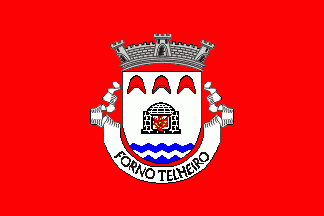
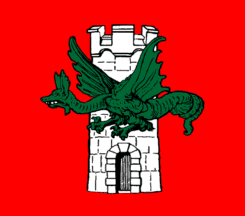
Flag of Hölstein, Switzerland;
Flag of Forno Telheiro, Portugal;
Flag of Klagenfurt, Austria
Please note with regard to 2) that charges can be arranged in pale but orientated fesswise as per the example below, with would be blazoned as five pairs of acorns fesswise in pale.
.gif)
Arms of Terfens, Austria (Wikimedia)
![[fessy example]](../images/v/vx-de-sf-sb.gif)
Flag of Saerbeck, Germany
![[fiche]](../images/v/vx-de-rb-vh.gif)
Flag of Visselhövede, Germany
![[flag from Star Trek]](../images/v/vx-fic-stsf.gif)
![[flag from the Movie Royal Flash ]](../images/v/vx-fic-strk.gif)
![[flag from the novel Nostromo]](../images/v/vx-fic-occr.gif)
Flag from the TV Series Starfleet ; Flag of Strackenz from the Movie
Royal Flash; Flag of
Sulaco from the novel Nostromo
![[flag from film Dark of the Sun]](../images/v/vx-fic-cdos.gif)
![[flag from film Casablanca]](../images/v/vx-ma_fr!cb.gif)
![[flag from film K-19]](../images/v/vx-fic-sosb.gif)
Spurious Flag of the Congo from the film Dark of the Sun;
Spurious Flag of French Morocco from the film Casablanca;
Spurious Soviet Naval Flag from the film K19
![[Nova Bukovica, Croatia]](../images/v/vx-hr-vi-nb.gif)
![[Nova Bukovica, Croatia]](../images/v/vx-hr)vi-nb.gif)
![[field example]](../images/v/vx-hr-zg-mg.gif)
Flag and Arms of Nova Bukovica, Croatia;
Flag of Marija Gorica, Croatia
![[Fenais da Luz]](../images/v/vx-pt-pdlfl).gif)
![[Grabow]](../images/v/vx-de-pc-gr.gif)
![[Eggerberg]](../images/v/vx-ch-vs007.gif)
Arms of Fenais da Luz, Portugal;
Flag of Grabow, Germany;
Flag of Eggerberg, Switzerland
![[filet]](../images/v/vxt-d896a.gif)
Please note
that the term is sometimes spelt “fillet” but in this form it
has a different meaning in English heraldry – see fillet 2) and
fillet 3).
![[filet cross]](../images/v/vx-ua-zt.gif)
![[filet cross]](../images/v/vx-ua)zt.gif)
![[filet cross]](../images/v/vx-pt-mdlfv-fx.gif)
Flag and Arms of Zhytomir County, Ukraine; Flag of
Freixeda, Portugal
Please note that the term is sometimes spelt 'fillet' but in this form it has a different meaning in English heraldry – see fillet 2) and fillet 3).
2) A heraldic term used to describe a second chief placed below that at the top of a shield or banner of arms; it is suggested by some sources that a fillet should have a depth equal to one-fourth of the chief above and by others that it is merely a diminutive of that term – see chief.
3) The term may also be used to describe a narrow headband or plain coronet – see coronet 1).
![[fillet]](../images/v/vx-hr-vi.gif)
![[fillet]](../images/v/vx-hr)vi.gif)
![[fillet]](../images/v/vx-it_cerd1.gif)
Former Flag and Arms of Virovitica-Podravina,
Croatia; Flag of Sardinia, Italy
![[fimbriated triband]](../images/v/vx-br-ap-004.gif)
![[fimbriated triband]](../images/v/vx-br-rj-034.gif)
![[fimbriated triband]](../images/v/vx-br-pi-163.gif)
Flag of Ferreira Gomes, Brazil;
Flag of Itatiaia, Brazil;
Flag of Piripiri, Brazil
![[fimbriated tricolour]](../images/v/vx-vc_1979.gif)
![[fimbriated tricolour]](../images/v/vx-gm.gif)
![[fimbriated tricolour]](../images/v/vx-na.gif)
National Flag of Saint Vincent 1979–1985;
National Flag of Gambia; Flag of Namibia
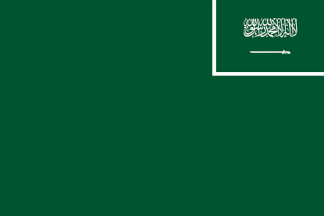
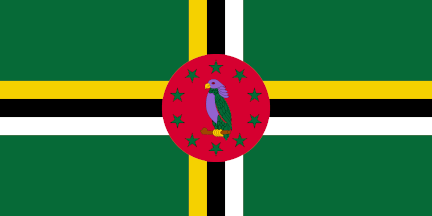
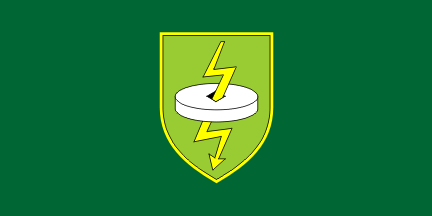
Civil Ensign of Saudi Arabia (obverse);
National Flag of Dominica;
Flag of Čačinci, Croatia
Notes:
a) The use of this term on flags is derived from an application of the heraldic rule of
tincture (as referenced in 2) above) which states that two tinctures must be separated by a band of a
metal (gold/yellow or silver/white) or two metals by a band of one or other tincture.
b) A charge may have a double or even triple
fimbriation, and if so we suggest that you consult the entry for
cotticed and its following note.

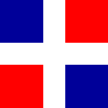
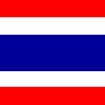
Fin Flash of the Royal Australian Air Force;
Fin Flash of the Dominican Republic;
Fin Flash of the Royal Thai Air Force
![[finials]](../images/v/vx-us^fineg.gif)
![[finials]](../images/v/vx-us^finas.gif)
![[finials]](../images/v/vx-us^finbx.gif)
US Military Finials: President, Navy and Army
![[Finishing Flag]](../images/v/vx-gb~popfn.gif)
Finishing Flag in Popham’s Code
![[Fire Alert Flag - Oklahoma]](../images/v/vxt-d409.gif)
Red Fire Alert Flag of the Oklahoma Forestry Commission, US (CS)
![[Firesteel example]](../images/v/vx-gr_byz14.gif)
![[Firesteel example]](../images/v/vx-cs-spc.gif)
![[Firesteel example]](../images/v/vx-rs-arand.gif)
14th century Flag of the Byzantine Empire;
Flag of the Serbian Orthodox Church;
Flag of Aranđelovac, Serbia
![[fish]](../images/v/vx-fr-68-il.gif)

![[fish]](../images/v/vx-pt-cltpp.gif)
Flag of Illhaeusern, France;
Flag of Nordreisa, Norway;
Flag of Ponta do Pargo, Portugal
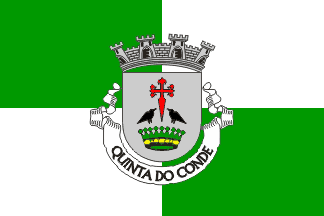
![[cross fitchy]](../images/v/vx-de-rb-vh.gif)
![[cross fitchy]](../images/v/vx-pt-mtlar.gif)
Flag of
Quinta do Conde, Portugal;
Flag of Visselhövede, Germany;
Flag of Alcaria Ruiva, Portugal
![[First canton]](../images/v/vx-de-impst.gif)
Emperor's Standard 1871–1918, Germany

![[Federal Service Flag of Austria]](../images/v/vxt-d410.gif)
![[Federal Service Flag of Germany]](../images/v/vx-de_state.gif)
![[Pepinster Belgium]](../images/v/vx-pepinster).gif)
![[Pepinster Belgium]](../images/v/vx-be-wlgpp.gif)
![[fess-point]](../images/v/vxt-d1377.gif)
![[fesslet]](../images/v/vxt-d1378.gif)
![[festive banner example]](../images/v/vxt-d053.gif)
![[First canton]](../images/v/vxt-d1576a.gif)